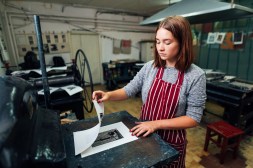Unlocking Creativity: Discovering Pottery Techniques and Its Fascinating History
Pottery is an ancient art form that has captivated people for centuries. The process of creating pottery involves molding clay into various shapes and then firing it to harden the material. This article will delve into the techniques used in pottery making and explore its rich history.
The Basics of Pottery Making
Pottery making begins with selecting the right type of clay. There are different types of clay, each with its own unique characteristics. Some clays are more plastic, making them easier to shape, while others are more porous, allowing for better absorption of glazes.

Once the clay is chosen, it is time to start shaping it. One common technique is hand-building, where the potter uses their hands or simple tools to shape the clay. This method allows for a more organic and free-form approach to pottery making.
Another popular technique is wheel throwing. This involves spinning a rotating wheel while shaping the clay using various tools. Wheel throwing allows for precise control over the shape and size of the pottery.
After shaping the clay, it needs to be dried before firing. This can be done through air drying or by using a kiln, which speeds up the drying process by applying heat.
Glazing and Firing
Glazing is an essential step in pottery making as it adds color, texture, and durability to the finished piece. Glazes are made from a mixture of minerals and chemicals that melt and fuse onto the surface of the pottery during firing.
There are numerous glazing techniques that potters can employ to achieve different effects. One technique is dipping or pouring glaze onto the pottery, ensuring an even coat across all surfaces. Another method is brushwork, where glaze is applied with a brush in intricate patterns or designs.
Firing is the final step in pottery making that transforms soft clay into durable ceramic objects. There are two firing techniques commonly used: bisque firing and glaze firing.
Bisque firing involves heating the pottery to a relatively low temperature, around 1800°F (982°C), to remove any remaining moisture and strengthen the clay. Glaze firing, on the other hand, takes place at a higher temperature, typically around 2200°F (1204°C), to melt the glaze and fuse it onto the surface of the pottery.
The History of Pottery
Pottery has a long and fascinating history that spans thousands of years. It is believed to have originated around 10,000 BCE in ancient Mesopotamia (modern-day Iraq) and Egypt. Early pottery was primarily utilitarian, used for storing food, water, and other everyday items.
As civilization advanced, pottery became more than just functional objects. It began to take on decorative elements as well. Ancient civilizations such as the Greeks, Romans, Chinese, and Mayans all made significant contributions to the art of pottery.
In Greece, intricate designs were painted onto pottery using a technique called black-figure or red-figure painting. The Romans perfected the art of mold-making for mass production of pottery. In China, porcelain was developed during the Tang Dynasty (618-907 CE), known for its delicate beauty and translucent quality. The Mayans created vibrant and detailed ceramic vessels that depicted scenes from their daily lives.
Today, pottery continues to be both an art form and a craft. Artists and artisans around the world create stunning pieces using traditional techniques passed down through generations or innovative methods pushing boundaries in contemporary ceramics.
Conclusion
Pottery is an art form that combines creativity with technical skill. Through various techniques such as hand-building and wheel throwing, potters shape clay into beautiful objects. Glazing adds color and texture while firing transforms soft clay into durable ceramic pieces.
The history of pottery is rich with innovation from ancient civilizations like Greece, Rome, China, and the Mayans. These cultures contributed to the development of techniques and styles that continue to inspire modern potters today.
Whether you are a pottery enthusiast or simply curious about this ancient art form, exploring the techniques and history of pottery can unlock a world of creativity and appreciation for this timeless craft.
This text was generated using a large language model, and select text has been reviewed and moderated for purposes such as readability.


